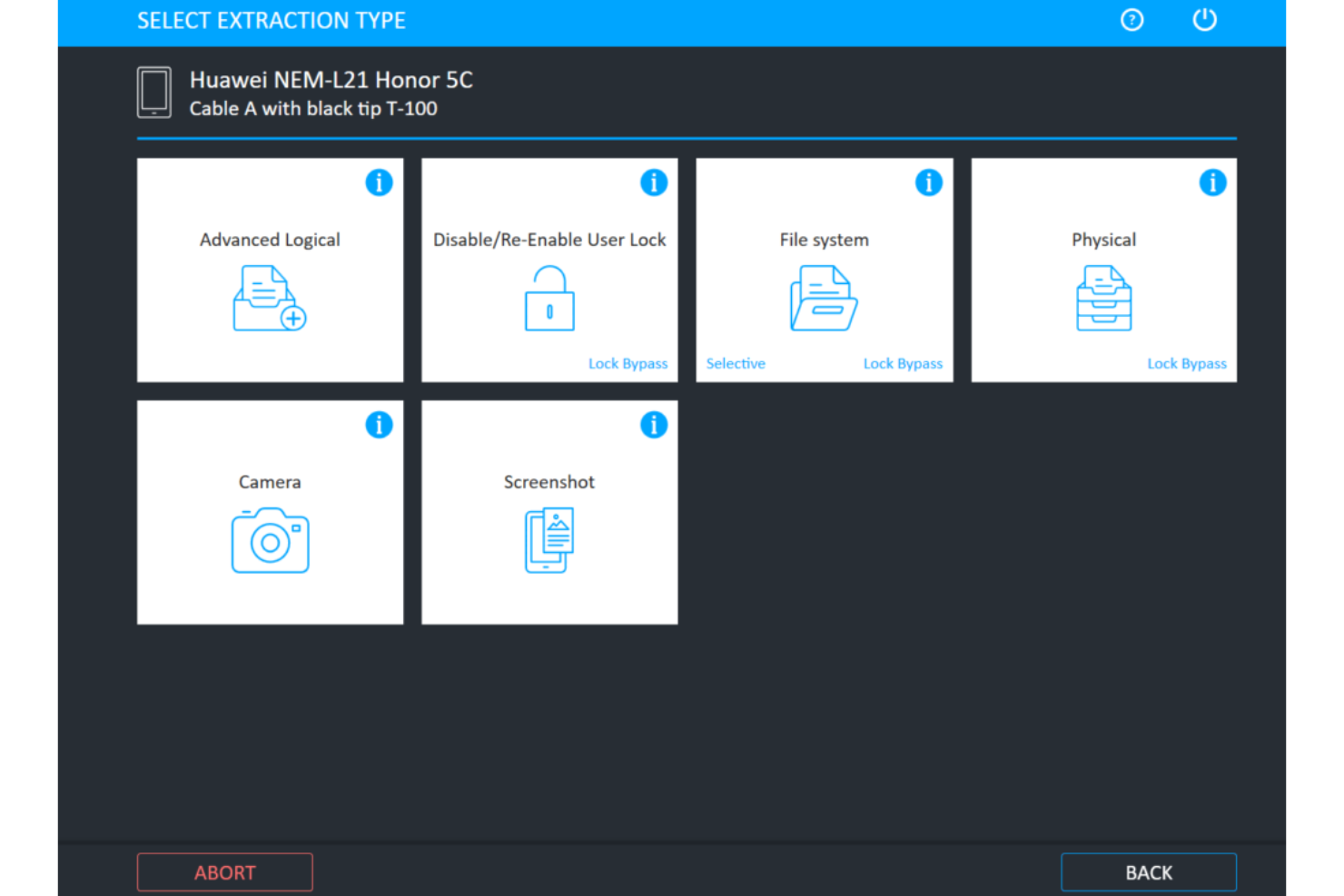Top 10 Paid Digital Forensic Tools in 2025: Features, Pros & Cons
Forensic specialists and law enforcement personnel mainly depend on strong tools to gather, examine, and present digital evidence in the quickly changing field of digital investigations. A number of sophisticated, paid digital forensic tools have emerged in 2025, offering unparalleled power in managing intricate cases involving computers, smartphones, cloud services, and video analysis.
Here’s a curated list of the Top 10 Paid Digital Forensic Tools in 2025, complete with their key features, advantages, and disadvantages.
1. Cellebrite UFED
Overview:
In 2025, Cellebrite’s Universal Forensic Extraction Device (UFED) will still be the top mobile device forensics product on the market. From GPS and SIM cards to iPhones and Android smartphones, it supports a vast range of gadgets.
Key Features:
-
Physical, logical, and file system extraction
-
Bypass device locks and encryption
-
Cloud extraction support
-
Integration with Cellebrite Pathfinder and Inspector
Advantages:
Disadvantages:
2. EnCase Forensic (OpenText)
Overview:
EnCase remains a cornerstone of computer forensic investigations. It provides full disk imaging, keyword searching, and artifact recovery.
Key Features:
-
Deep Windows, macOS, and Linux file system support
-
Chain of custody management
-
Custom scripting and automation
-
Remote acquisition
Advantages:
Disadvantages:
-
Steep learning curve
-
Pricey annual licensing
3. Magnet AXIOM
Overview:
Magnet AXIOM is a robust solution for mobile, cloud, and computer forensics. It’s especially powerful for artifact recovery and timeline reconstruction.
Key Features:
-
Integration of smartphone and computer data
-
Timeline and connection visualization
-
Cloud and browser artifact recovery
-
Magnet.AI for content classification
Advantages:
-
Excellent UI and visualization
-
Supports over 1,000 artifact types
-
Frequent updates with new device support
Disadvantages:
4. Falcon (Logicube Falcon-NEO)
Overview:
A high-speed forensic imaging tool called Falcon NEO is used to retrieve data from USB devices, SSDs, and hard drives.
Key Features:
-
Imaging speeds over 50GB/min
-
Supports NVMe, SATA, SAS, USB
-
Write-blocking and hashing
-
Cloning and wiping features
Advantages:
Disadvantages:
5. TX1 (Tableau TX1 by OpenText)
Overview:
Another well-known imaging hardware product from OpenText, TX1, is renowned for its compatibility and performance.
Key Features:
-
Forensic imaging of SATA, SAS, USB 3.0, PCIe
-
Dual destination output
-
RAID and encrypted drive support
-
Web interface for remote control
Advantages:
-
High compatibility with storage media
-
Reliable and court-trusted
-
Intuitive touchscreen and remote access
Disadvantages:
6. Belkasoft X
Overview:
Belkasoft X is an all-in-one forensic solution covering mobile, computer, RAM, and cloud investigations.
Key Features:
-
Live RAM and drive acquisition
-
Mobile device parsing
-
SQLite and registry analysis
-
Timeline and connection graphing
Advantages:
Disadvantages:
7. Oxygen Forensic Detective
Overview:
Oxygen is renowned for delving deeply into the extraction and analysis of cloud and mobile data, including data from encrypted apps and the Internet of Things.
Key Features:
-
Bypass device encryption
-
Cloud data acquisition
-
Social media, messenger, and IoT analysis
-
Facial recognition and OCR
Advantages:
-
Best-in-class support for app analysis
-
Advanced search and analytics
-
Regular updates with new app support
Disadvantages:
-
Resource-heavy software
-
High subscription costs
8. MOBILedit Forensic Express Pro
Overview:
MOBILedit is a solid choice for mobile forensics, often used by law enforcement agencies globally for its comprehensive mobile analysis capabilities.
Key Features:
Advantages:
Disadvantages:
9. Amped FIVE
Overview:
Amped FIVE is the industry standard for forensic video analysis, enhancement, and authentication.
Key Features:
-
Video stabilization, sharpening, denoising
-
Format and codec analysis
-
Image enhancement for license plates, faces
-
Export to court-ready reports
Advantages:
-
Powerful tool for CCTV/video analysis
-
Widely accepted in legal systems
-
Step-by-step documentation for each enhancement
Disadvantages:
10. FOENICS (by MSAB)
Overview:
Built for speed and contemporary workflows, FOENICS is a relatively new but potent player in the mobile and digital forensics market.
Key Features:
-
Fast smartphone extractions
-
Visual timeline and link analysis
-
User behavior reconstruction
-
Supports Android, iOS, and cloud accounts
Advantages:
Disadvantages:
🔍 Summary Comparison Table
| Tool |
Best For |
Strength |
Limitation |
| Cellebrite UFED |
Mobile forensics |
Strongest device support |
Expensive |
| EnCase Forensic |
Disk and OS-level forensics |
Deep file system control |
Complex UI |
| Magnet AXIOM |
All-in-one investigations |
Artifact detection & visualization |
High resource usage |
| Falcon |
Fast forensic imaging |
Speed and portability |
Imaging only |
| TX1 |
Storage device imaging |
Versatile hardware support |
No analysis features |
| Belkasoft X |
General forensics |
RAM & app analysis |
Smaller user base |
| Oxygen Forensic Detective |
App & IoT forensics |
Deep app analysis |
High resource demand |
| MOBILedit |
Budget mobile tool |
Easy reporting |
Less physical bypass capability |
| Amped FIVE |
Video forensics |
Best for video enhancement |
No acquisition |
| FOENICS |
Modern investigations |
Speed and visualization |
Still maturing |
Conclusion
Choosing the right digital forensic tool in 2025 depends on your use case, whether it’s mobile extraction, disk analysis, cloud investigations, or video enhancement. While some tools like Cellebrite UFED and EnCase remain industry leaders, others like Belkasoft X and FOENICS offer innovation and affordability.
Each tool has its strengths and trade-offs. Law enforcement, private investigators, corporate cybersecurity teams, and legal professionals must evaluate factors like budget, training needs, supported platforms, and case complexity.
At Hawk Eye Forensic, we utilize industry-best tools including Cellebrite, Magnet AXIOM, Oxygen, and Amped FIVE to deliver high-quality forensic services across Delhi and India.
1. What is the most popular paid digital forensic tool in 2025?
As of 2025, Cellebrite UFED is the most widely used and trusted tool for mobile forensic investigations. It supports the latest smartphones and encrypted apps, making it a go-to for law enforcement and forensic experts worldwide.
2. Which digital forensic tool is best for computer data analysis?
EnCase Forensic (OpenText) is considered the best for computer-based forensics. It offers deep file system analysis, keyword search, registry inspection, and maintains a solid chain of custody — ideal for Windows, macOS, and Linux systems.
3. Can I use Magnet AXIOM for both mobile and computer forensics?
Yes, Magnet AXIOM is designed as an all-in-one forensic suite. It allows seamless analysis of data from mobile devices, cloud accounts, and computers — with excellent timeline and artifact visualization features.
4. What’s the difference between TX1 and Falcon forensic tools?
Both TX1 and Falcon are forensic imaging tools. Falcon NEO is known for high-speed field imaging, while TX1 (Tableau) offers broader media compatibility, including RAID systems and encrypted drives. Neither tool performs data analysis — they’re used strictly for acquisition.
5. Which forensic tool is best for video analysis?
Amped FIVE is the top choice for forensic video enhancement and authentication. It supports stabilization, sharpening, frame-by-frame analysis, and is accepted by courts globally for CCTV footage processing.
6. Is Belkasoft X a good alternative to Magnet AXIOM?
Yes, Belkasoft X is a strong and more affordable alternative to Magnet AXIOM. It excels in memory (RAM) analysis, registry inspection, SQLite parsing, and live data acquisition, though it has a smaller artifact library.
7. Which tool should I use for encrypted chat app forensics?
Oxygen Forensic Detective is known for its exceptional support for encrypted messaging apps like WhatsApp, Signal, Telegram, and more. It can also extract data from cloud platforms, IoT devices, and locked smartphones.
8. Are MOBILedit and Cellebrite UFED similar?
Both tools are used for mobile forensics, but Cellebrite UFED offers more advanced capabilities such as device unlocking, physical extractions, and broader device compatibility. MOBILedit is more affordable and suitable for logical extractions and small-scale investigations.
9. Can FOENICS handle both mobile and cloud investigations?
Yes, FOENICS (by MSAB) supports modern mobile and cloud-based investigations. It is designed with speed and visualization in mind, making it suitable for fast-paced law enforcement or corporate security environments.
10. Are these paid forensic tools accepted in court?
Absolutely. All the tools listed — including Cellebrite, EnCase, Magnet AXIOM, and Amped FIVE — are widely accepted in courts due to their accuracy, audit trails, and standardized reporting formats that support the legal chain of custody.





Post comments (0)